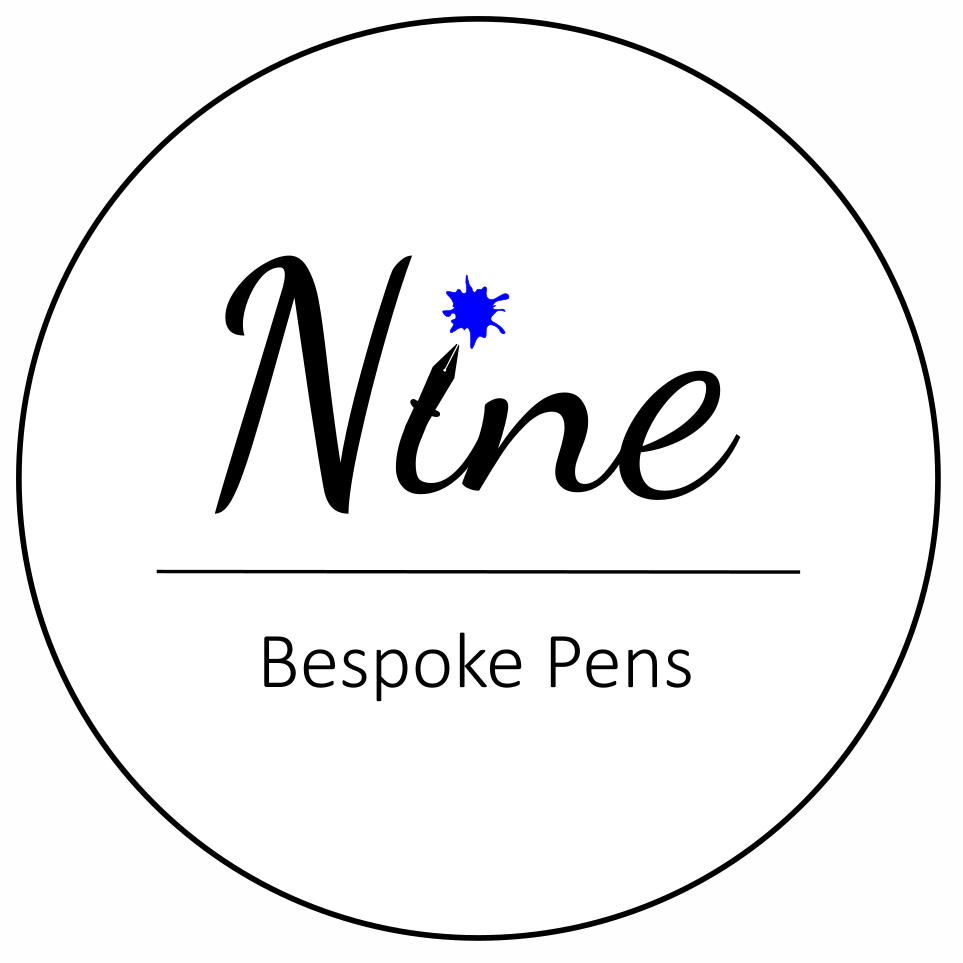This past weekend was the Newcastle Pen Show, the 4th in the calendar and the penultimate show of the year. Plenty of familiar vendors were there with their usual offerings including Stonecott Fine Writing Supplies; Pick N Mix Samples; Powerful Signature; St John’s Pens; Twiss Pens; Shibui North; Vintage Fountain Pens and many more not mentioned!
I had a double table set up in full swing offering over 25 of my hand made bespoke fountain pens, accompanied by 3D printed ink tester holders and ebonite keyrings / keychains. The event was a relaxed and enjoyable day with a good consistent footfall. Several visitors stopped to ask me about my work and how I got into making fountain pens and interestingly several mentioned that they wanted to take the step from turning kit pens to making kit-less pens and weren’t too sure on what they needed to buy / do!
With this in mind, I thought it would be a good idea to make a quick guide on how to get started on a wood based lathe. This first guide will cover TOOLING! The next guide will be about ‘how’! Please remember I am UK based, so my source links will be relevant to my location. Others are probably available in the UK and certainly abroad but I can only list so many!!
Assumptions
Considering this is post is about converting, and not starting, I am making the following assumptions:
- You already have a lathe and are familiar with how it operates.
- You have turning tools, minimum required will be a spindle gouge and a parting tool. A replacement for the gouge could be carbide inserts (square)
- You have callipers for correctly measuring your stock
- You have a Jacobs chuck for the tail stock
- You have put the glue away!!! 🙂
Tools Required
There aren’t a lot of differences when moving over from one style to the other, however there are a few, and these are what I suggest:
- Collet chuck – Holding rounded stock in the head stock, securely and concentrically. ER32 is the profile you need which will allow up to 20mm diameter stock.
- Rotating centre tail stock with narrow head – You will often want to secure the stock from the tail end. On kit pens, you probably had the mandrel mounted on something, sometimes this is a different type of head.
- Stock Mandrels – When threaded, holding the stock outside of the headstock to allow work on the outside diameter.
- Beaufort Ink – While Beaufort Ink only have mandrels for triple start threads, it is quite easy to make your own mandrels using brass / aluminium / Delrin or similar!
- Taps and dies – This section could have it’s own guide all by itself, so I will try to keep this simple and advise on what I tend to use. You will need 3 different sizes. 1 tap for screwing the nib housing unit into the section >> 1 tap and die for screwing the section into the barrel or body >> 1 tap and die for screwing the cap to the barrel or body!
- Beaufort Ink and The Turners Workshop will sell you triple start threads but these are NOT required to make a kit-less pen. Single start work perfectly fine and significantly reduce the cost of ‘tooling up’! Triple start come later when you are confident with what you are doing!
Beaufort Ink / RDG Tools / The Turners Workshop / Volkel - For the taps for the nib housing, The Turners Workshop will provide for Jowo and Beaufort Ink will provide for Bock. Schmidt are searchable in the wider markets.
- To thread a male tenon you will need a die holder. For this a sliding tailstock die holder is preferred – RDG Tools / Beaufort Ink
- Beaufort Ink and The Turners Workshop will sell you triple start threads but these are NOT required to make a kit-less pen. Single start work perfectly fine and significantly reduce the cost of ‘tooling up’! Triple start come later when you are confident with what you are doing!
My preferred thread sizes are 14mm for the cap to barrel / body with an 11mm thread for the section to the barrel. This provides a nice amount of ‘wall’ to maintain some strength in the pen. This does mean that the barrel can’t really be any thinner than 14mm in diameter. You can absolutely use 13mm barrel threads instead with 10mm section threads, or even 14mm + 10mm.
If you have a long section and are using ink converters, a 10mm section tenon will not safely allow you to drill out the 7.3mm inner diameter to allow the converter to slide in enough, this is another reason I use 11mm. This is because you will only have a wall tenon thickness of around 1.3mm!






Section tenon looking through from the back

Using an 11.0mm tenon and drilling central hold of 7.3mm will leave you with a wall thickness of 1.85mm!
Barrel tenon looking through from the front

Using a 14.0mm tenon and drilling central hold of 10.0mm will leave you with a wall thickness of 2.0mm!
Summary
So there you have a list of tools that you will most likely need to venture into kit-less pen making. The taps for the nib housings are the most critical item to get right – the sizes of the threads for the rest are reasonably variable.
I will publish the next guide that will talk about the ‘how’, including any hints tips and tricks.
Thanks for reading! 🙂
